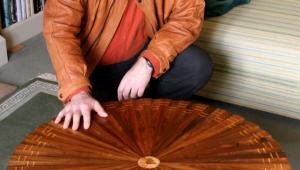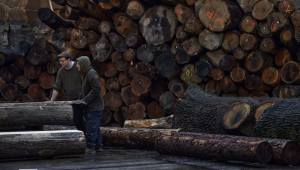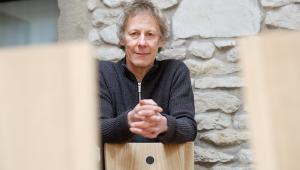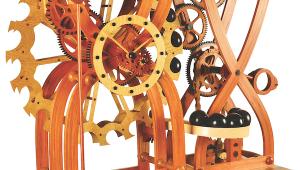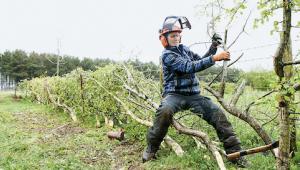The Alan Peters Furniture Award 2022 – the best of British: meet the makers
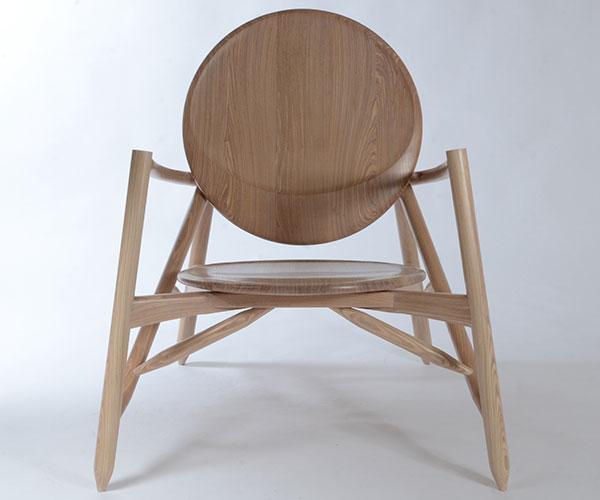
A year in the making and following a rigorous judging process, the winners of The Alan Peters Furniture Award 2022 have now been chosen and are presented for you here – starting with first, second and third places, followed by those highly commended and commended entries.
In contrast to the 2021 award, which was forced to adapt due to COVID-19 restrictions, this year, we’ve been able to realise what we set out to do: hold a physical prize-giving ceremony followed by an exhibition of winners’ work. In order to maintain Alan Peters’ legacy, winning pieces were expected to echo his design and making ethos – honesty of construction, respect for the material in terms of timber movement, and a simple understated form.
Alan Peters OBE was influenced by the Arts & Crafts having apprenticed to Edward Barnsley, and a later trip to Japan also shaped his work. While the selected pieces are unique and visually very different, each scores highly in terms of design, craftsmanship, aesthetics, use of materials and originality.
In common with last year’s final five, we again see a mix of experienced makers and relative beginners, which builds on the value of the original award whereby beginners – winners – had the opportunity to exhibit work alongside that of seasoned professionals.
Bolstered by previous success, continuing this award has allowed us to discover and champion new and existing talent up and down the country, and most importantly, do our part to keep Alan Peters’ legacy alive, which we’re very honoured to do.
A prize-giving ceremony was held at first prize sponsor Axminster Tools’ Nuneaton store on 12 October, which will be proceeded by a month-long exhibition showcasing the five top pieces. For further information, see www.jeremybroun.co.uk.
EXPERT JUDGING PANEL
Jeremy Broun – Organiser
Designer-maker and co-exhibitor with Alan Peters from 1978–2002
Freya Whamond – Guest judge
Yorkshire-based woodworker, furniture designer-maker, and winner of The Alan Peters Award for Excellence 2017
Furniture designer-maker who worked with Alan Peters, as well as contributing towards his last commission
1ST PRIZE: Jeff Maker’s ‘Luna’ chair – £1,000 Axminster Tools voucher
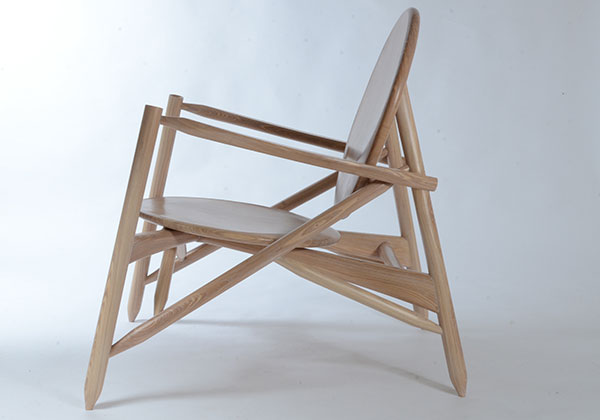
Meet the maker
Having initially studied Fine Art at Nottingham University, Jeff followed a career in commercial project management – specifically gallery installations. Viewing furniture making as a challenge to his creative potential, Jeff undertook a year’s training at the Waters and Acland furniture school, based in the Lake District.
Jeff continues: “I now have a business in the National Forest called Storied Furniture, producing bespoke commissions of all sizes. Through furniture I hope to inspire, record and house stories, carrying the marks of the hands of both maker and user.”
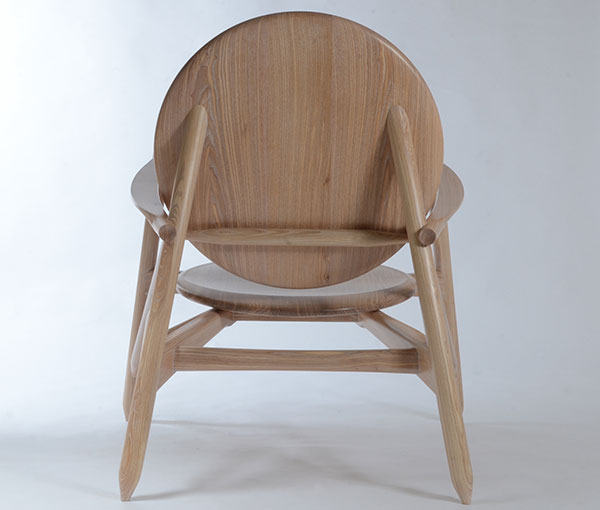
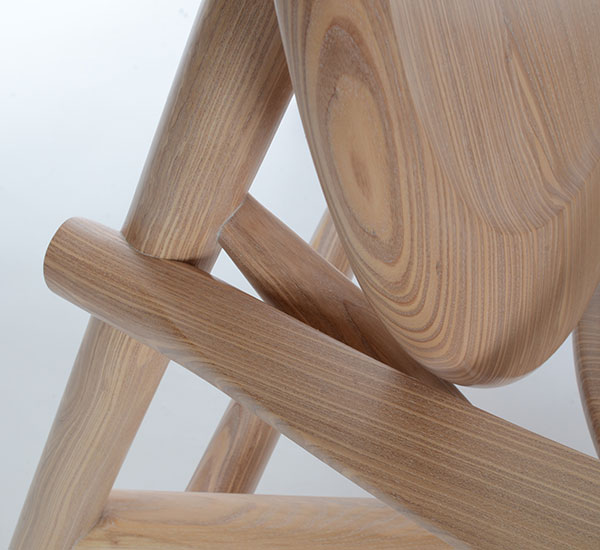
Maker’s statement
‘Luna’ takes inspiration from the long and varied histories of human relationships with the moon. It seeks to combine visual references to folk tales of the moon as an intangible but potent cultural object along with stories of the Apollo moon landings, when humankind first brought the moon within the tangible sphere of the human universe.
Using 14 stopped tapered mortise & tenons presents a variation on the traditional Windsor chair joint, giving a nod to the bodger/woodsman in the tale of The Man in the Moon. The chair construction involved jigs, which allowed each hole to be drilled and tapered. Following initial machining, the seat, back and arm rests were then shaped by hand, using carving grinder discs, spokeshaves, and travisher, which Jeff made specifically for this chair.
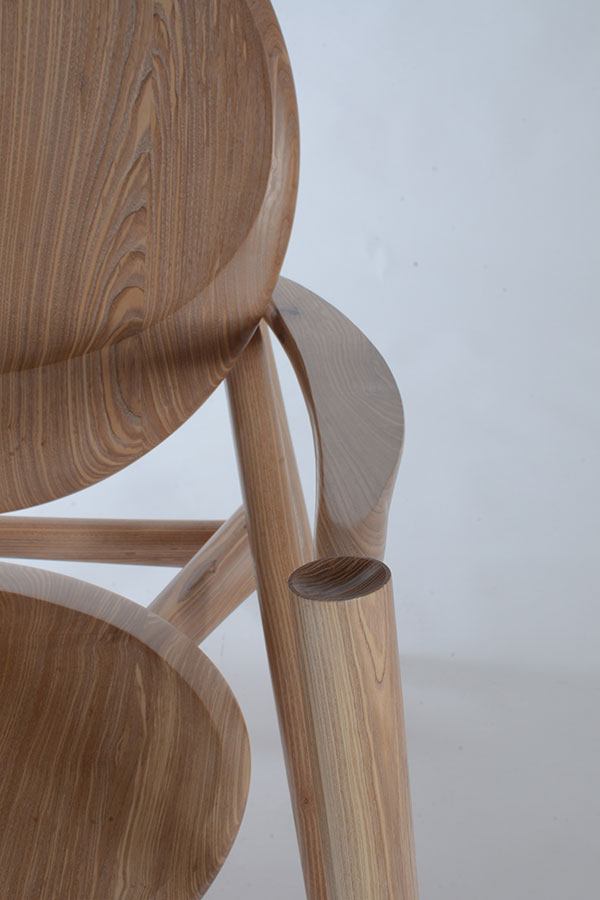
Judges’ comments
Chairs are immensely difficult to get right in terms of structure, form and comfort. This particular chair echoes the English Windsor tradition and involves some advanced geometry, if a little visually busy. It demonstrates the importance of jigs devised in chairmaking, and referencing the moon landing adds an element of playfulness. Altogether, a really well-earned first prize. Congratulations.
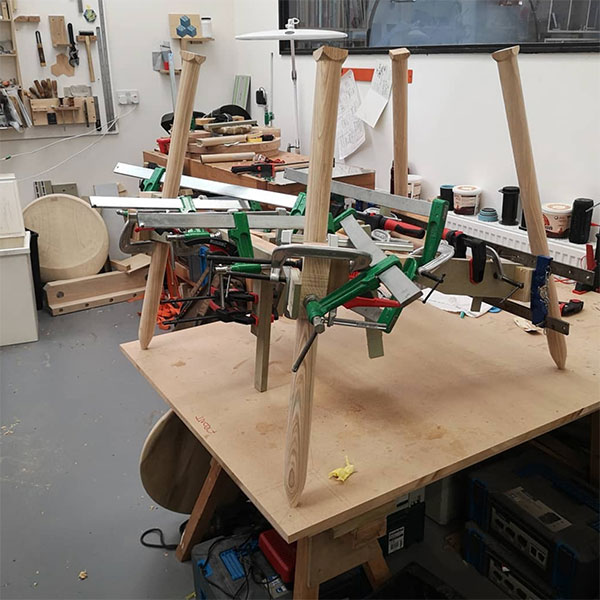
CONTACT DETAILS
Instagram: @storied.furniture
Web: www.storiedfurniture.co.uk
2ND PRIZE: Matthew Tyson’s ‘Cirrus’ Desk – £500 English Woodlands Timber voucher
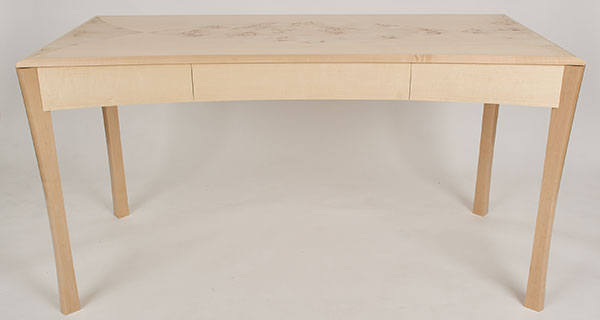
Meet the maker
Matthew studied Graphic Design & Multimedia before training as a designer-maker at Rowden Atelier Woodworking School, founded by the late David Savage. Here, he was given the opportunity to build on the skills and knowledge developed through a lifelong interest in woodworking and later, furniture making. As soon as he’d completed his training, Matthew spent some time working with designer-maker Marc Fish, before moving to Somerset to join Matthew Burt’s workshop.
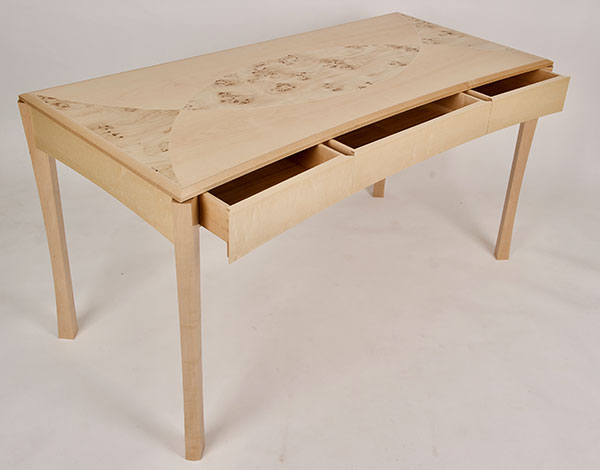
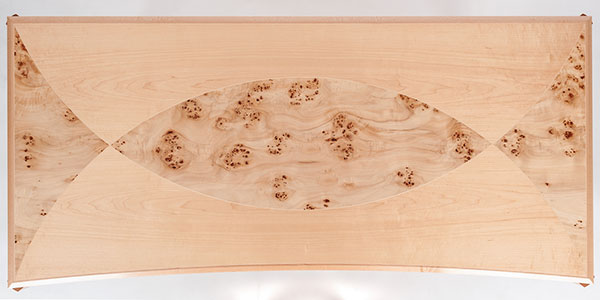
Maker’s statement
The aim of this piece was to create a functional and elegant desk, with storage for large A3-sized drawings, among other items. The design features subtle curves and shadow details, which are repeated throughout. The piece is predominantly made from maple, with burr poplar panels and sycamore string-lines. Traditional, hand-fitted drawers feature coved slips to house an English cherry base. The drawer fronts consist of two components to allow for the curved front profile. The completed desk is French-polished and waxed.
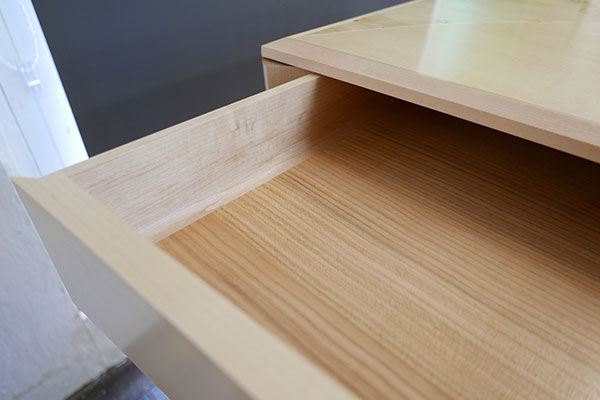
Judges’ comments
A classic, understated design with much technical detail. This is an elegantly presented desk with a well-considered decorative surface and beautifully made drawers featuring neat dovetail joints. ‘Cirrus’ desk echoes Alan Peters’ philosophy. It’s surprising that French polish is still used in contemporary furniture given the fact it’s soft and prone to water staining.
CONTACT DETAILS
Instagram: @matthewtysonfurniture
Web: www.matthewburt.com
3RD PRIZE: PHILIP GAY’S ‘Less is More’ – £300 Judges’ cash prize
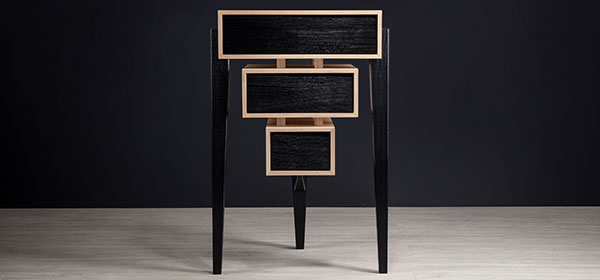
Meet the maker
Having worked as a prop-maker in the UK film industry for over 10 years, Philip amassed a diverse range of skills and a knowledge of many different materials. Last year, wishing to make more permanent objects, he enrolled on a fine furniture making course.
With a focus on creating tactile and intriguing pieces, the majority of Philip’s current work features strong, bold shapes and clean lines – “it’s quite an engineered aesthetic,” he comments – often combining light and dark timbers, or contrasting materials, to achieve a strong visual impact. Aiming to create fresh, interesting forms and material combinations, he enjoys using timber with other materials, such as aluminium, ceramics or fabrics.
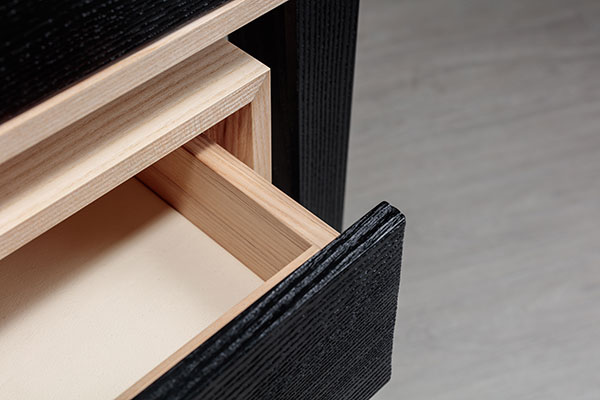
Maker’s statement
In an attempt to strip things back, ‘Less is More’ does away with the idea of a typical big box carcass, and instead explores diminished forms and negative spaces. The double-veneered birch plywood boxes feature solid ash lippings and are joined with biscuits on the mitres. The drawers themselves are solid ash joined with solid wood splines and a veneered ply base, mounted on Blum push-to-open undermount runners. The drawer fronts were hand-shaped, scorched and dyed, then fitted with brass screws.
The legs were first roughly machine cut, then hand planed to final shape. The angled rear leg creates a potential weak point, so Philip utilised a sliding dovetail in order to make this rock solid. The rear leg is attached with dominos and bolts, which allows good alignment and a reliable clamping method. Countersunk bolts and screw inserts are also used to connect the three boxes with the front legs, which are attached using dominos.
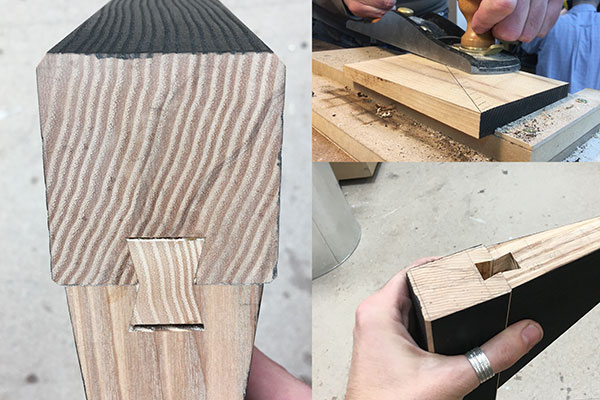
Judges’ comments
We found this piece fascinating and something that needed to be fully digested. The subtle faceted drawer fronts aren’t immediately apparent, but entice the user to push in order to spring the drawers out. There was some debate over the use of metal drawer fittings. A good contrast in colour and texture and it’s no mean feat to achieve consistently invisible glue lines on long biscuited mitre joints. If it wasn’t for the metal fittings used, this piece would have ranked higher. We did notice incorrect grain direction on the rear leg’s internal dovetail key, but overall, felt this was a really excellent piece.
CONTACT DETAILS
Instagram: @timber_robot_studio
Web: www.timberrobotstudio.com
HIGHLY COMMENDED: Tom Inman’s Kumiko-inspired coffee table – ‘Kesshouka’
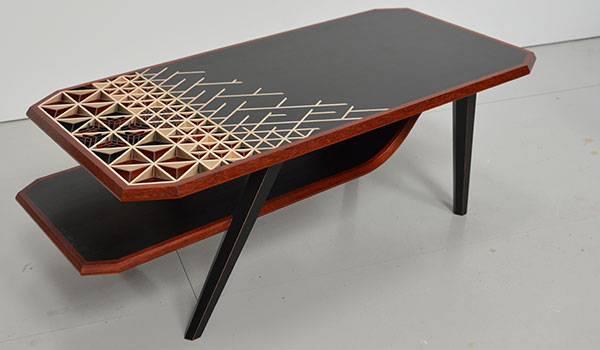
Maker’s statement
This coffee table was inspired by the traditional Japanese Kumiko technique and crystallisation of a snowflake. Purely decorative, Kumiko is traditionally used for screens, and this piece attempts to use it in a different way. Materials employed for the main construction are ply and flexi ply core with London plane – lacewood – veneer, African padauk lippings and laminated sycamore inlays; and for the Kumiko design, laminated sycamore, ebony and African padauk.
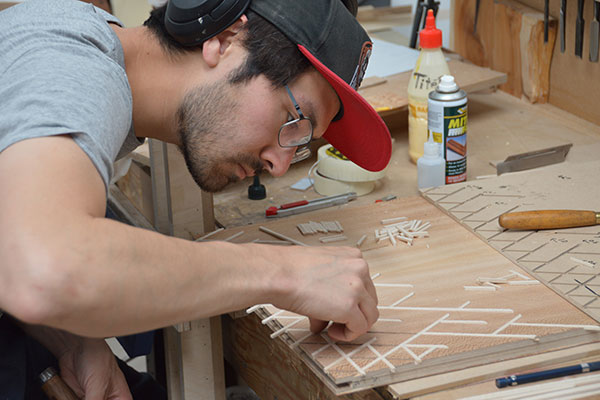
Judges’ comments
An unusual and striking piece reflecting Alan Peters’ Japanese influence. It looks articulately made with all those three-way cross-halving joints. The open latticework looks somewhat prone to small objects falling through – such as tea spoons – and raises the question of what if a child were to sit on the table? Is it strong enough? Coffee tables and chairs in particular will inevitably not be used as the maker necessarily intended. We found the design to be somewhat visually busy, but overall, this table is an extraordinary effort.
CONTACT DETAILS
Instagram: @katoinman_woodwork
COMMENDED: Robin Johnson’s ‘Chanterelle’ chair
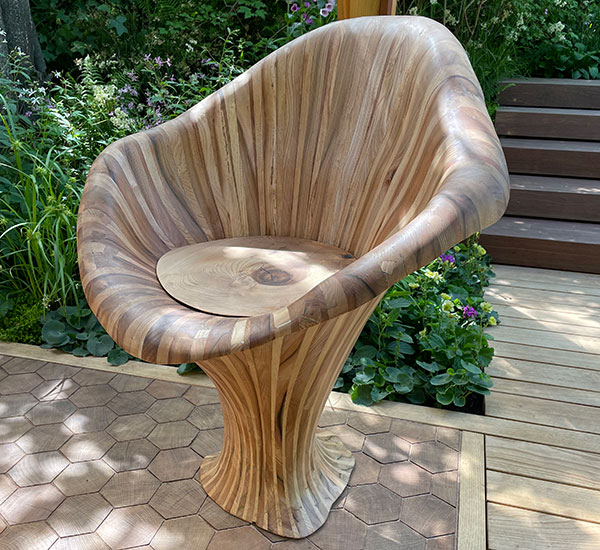
Maker’s statement
Inspired by the Chanterelle mushroom, with sustainability in mind, Robin chose to use timber native to the UK, with characteristics that’d suit the outdoor environment the chair would be living in after the RHS Chelsea Flower Show.
A template was made for each of the 136 pieces to mark onto boards to ensure least waste and best use of grain. The individual pieces were then rough-cut using a jigsaw, fine-cut with a bandsaw, then finish-cut using a router and guidebush. To achieve the taper to the centre, a number of jigs and angled beds were made up to pass each piece through the thicknesser.
Once tapered, these were laminated to form the two halves of the chair before being joined together to give the rough form. Once together, the chair was shaped using a range of hand and power tools, then finally sanded and finished by hand.
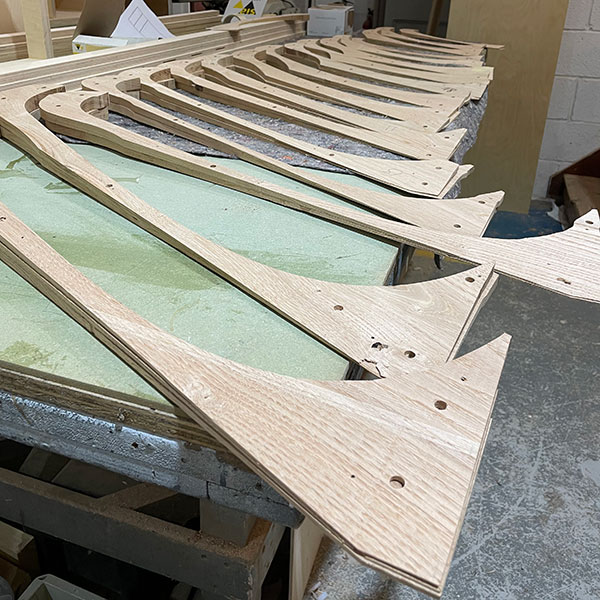
Judges’ comments
A real dilemma facing us over this visually striking and technically challenging piece is that although it clearly has the ‘wow’ factor and could’ve earned a higher ranking, the craftsmanship with plugs, filler and some open joints falls short of the very high standard of workmanship that an award in Alan Peters’ name demands. However, it does echo Alan’s tub chair design although intended for outdoor use.
The laborious finishing is impressive. Another dilemma faced is that wood sculpture doesn’t usually call for the articulate craftsmanship commonly seen in fine furniture, but does raise the question of durability when laminating for outdoor work using PVA glue. A difficult decision that involved much deliberation, as we have to ensure consistency in criteria as with past award winners. All in all, an excellent effort.
CONTACT DETAILS
Instagram: @johnson_bespoke
Web: www.johnsonbespoke.co.uk
A MESSAGE FROM THE ORGANISER: Jeremy Broun
Unlike the 2021 award, which consisted of an online-only prize-giving ceremony and virtual exhibition, this year, we recorded significantly less entries – possibly because it’s a physical event? Fortunately, the standard of designing and making was high, but the question I constantly ask myself is: “What would Alan Peters think of this piece?” Luckily, my main co-judge and solid support, Andrew Lawton, also knew Alan and therefore faces the same quandary.
This year, we’re happy to welcome ex Alan Peters award winner Freya Whamond as guest judge, and her contribution was much appreciated in terms of providing a younger generational view. The judges’ comments given here are combined statements. Alan Peters’ own furniture was characterised by an honest and open use of material, and the man himself spoke his mind. I too have a tendency to tell it like it is, so bear with me while I vent a few frustrations!
I have to say that whereas some applicants were very professional, read the somewhat detailed guidelines and supplied necessary documentation and images, others proved more difficult and involved a great deal of chasing up and badgering.
Due to the fact this award is put together on a zero budget, the time and energy it demands is given freely and with a desire to keep Alan Peters’ name alive. However, I’d like to stress that anyone entering such an award should do so in the knowledge that this may require committing to assigned dates – in this case, a month-long exhibition – and where possible, be flexible and understanding of the logistics involved.
I have first-hand experience of such an instance, when back in 1978 Alan Peters spotted my work and invited me to exhibit alongside himself, John Makepeace and two other notables at a major show called ‘Flavour of the Seventies’. He wrote to me explaining that by inviting an unknown, he was putting his reputation on the line. Luckily, I didn’t disappoint him and worked til 3am some nights, and at short notice, produced four innovative pieces especially for the event. As such, I wouldn’t have dreamt of pulling out work prematurely at this or any other exhibition subsequently.
Given the fact Alan was so instrumental in paving the way for furniture makers of today, he, more than anyone, deserves the respect of those entering an award in his name. I cannot stress enough the importance of reading guidelines and entry requirements thoroughly and ensuring to supply the correct material first time round. Doing so will ensure the process is made as smooth and stress-free as possible for all involved.
We look forward to welcoming visitors to the exhibition and presenting the well-deserved winners with their prizes – this time in person. Congratulations to the 2022 final five and especially Jeff Maker, who’s ‘Luna’ chair quite literally stole the show.
The Alan Peters Furniture Award 2024
To give future entrants the optimum amount of time to create their pieces and compile the required materials, the award will take a break next year and resume in 2024. Look out for details of The Alan Peters Furniture Award 2024 in the months ahead
- Log in or register to post comments

